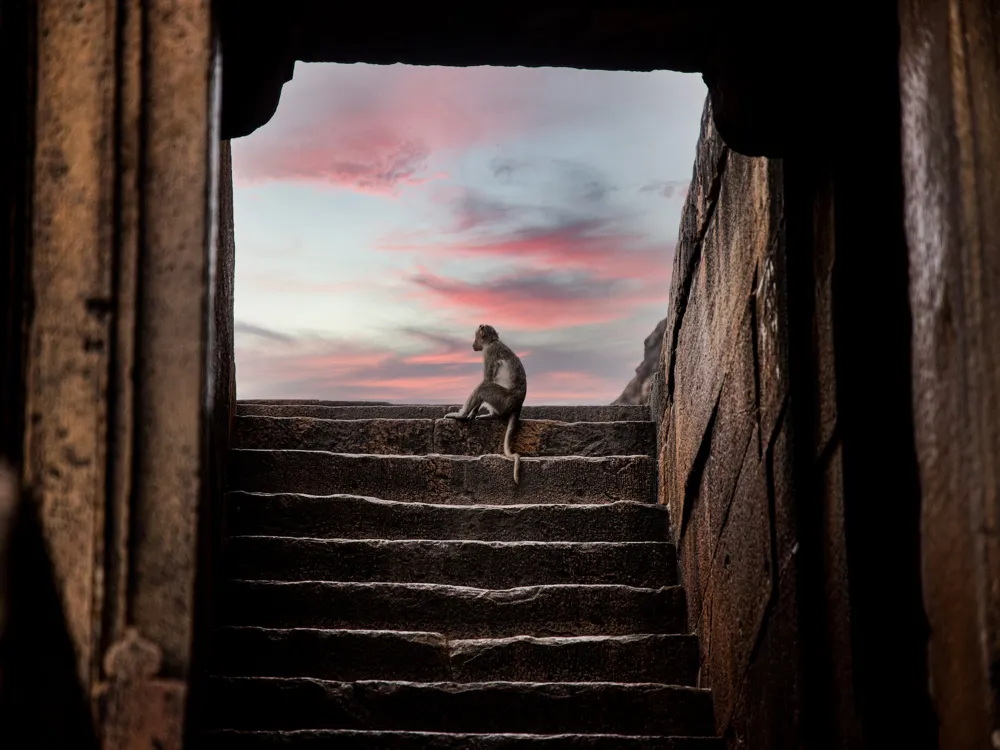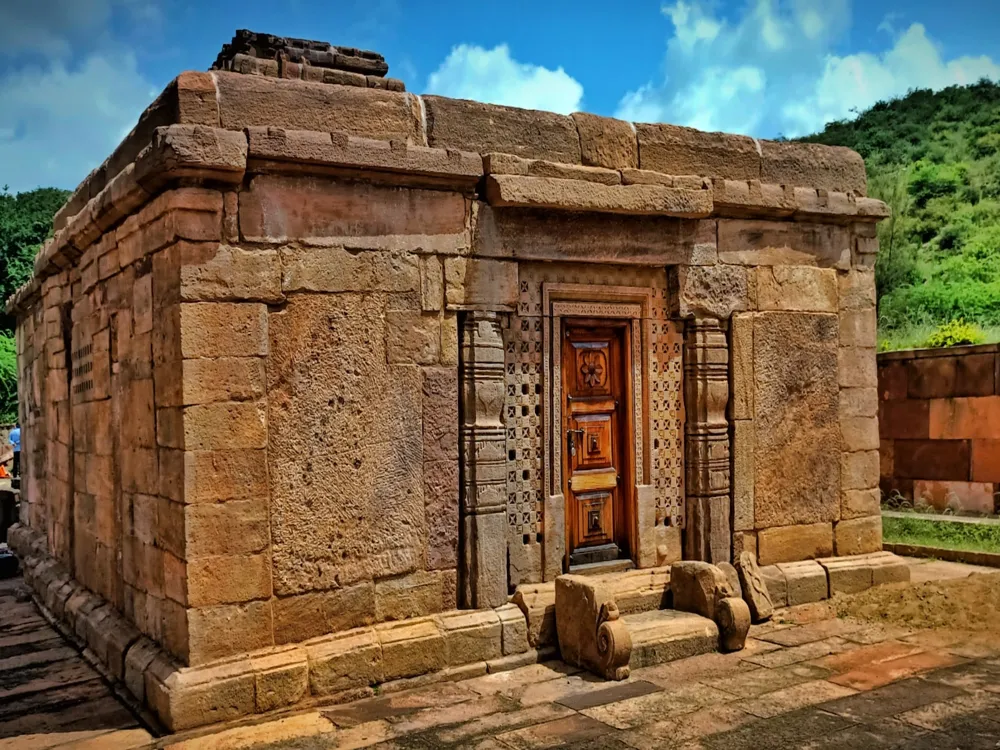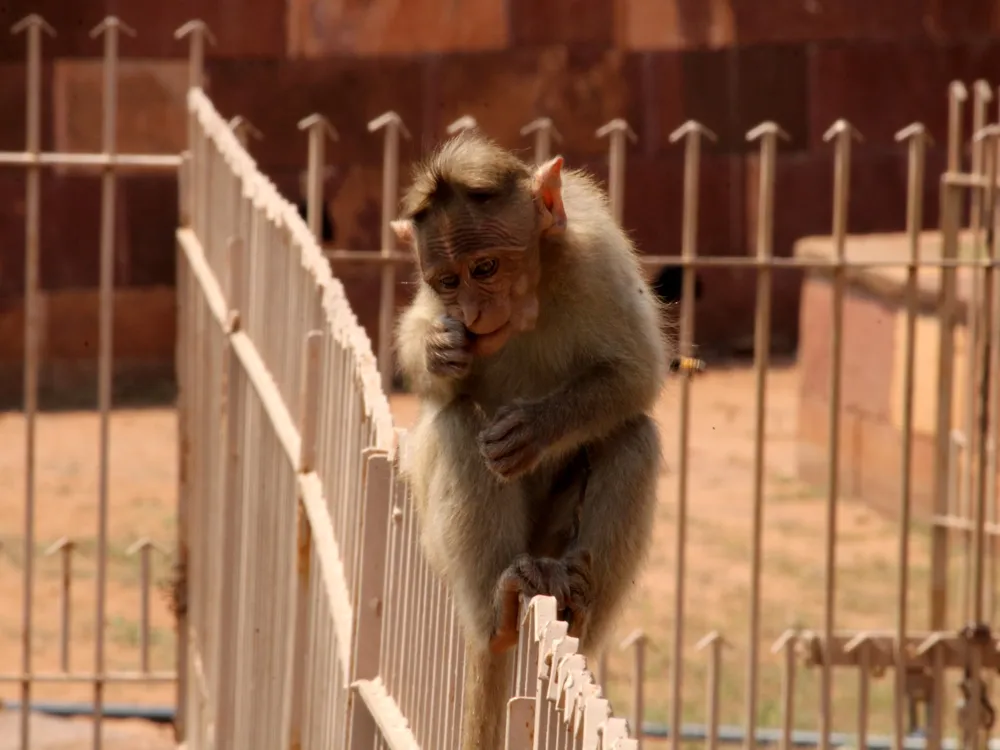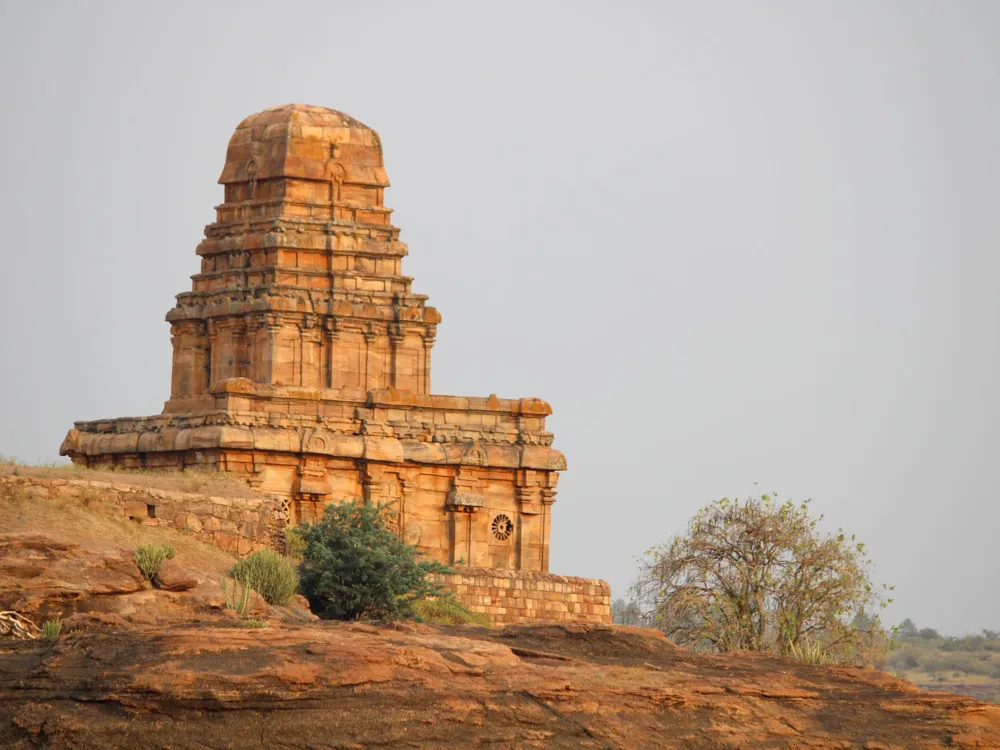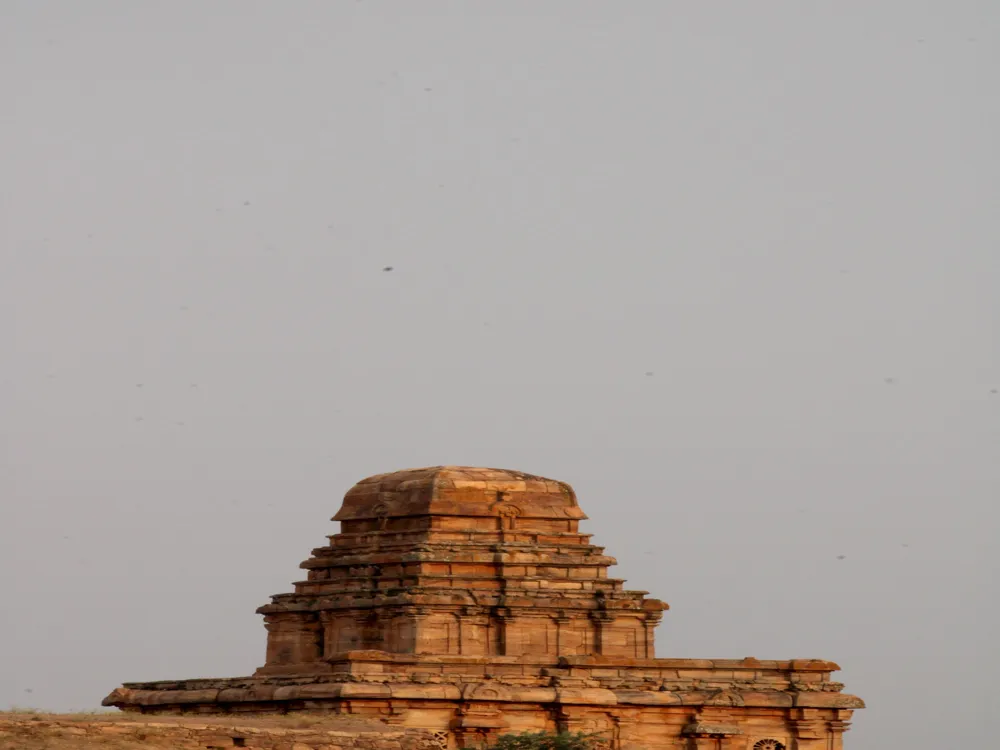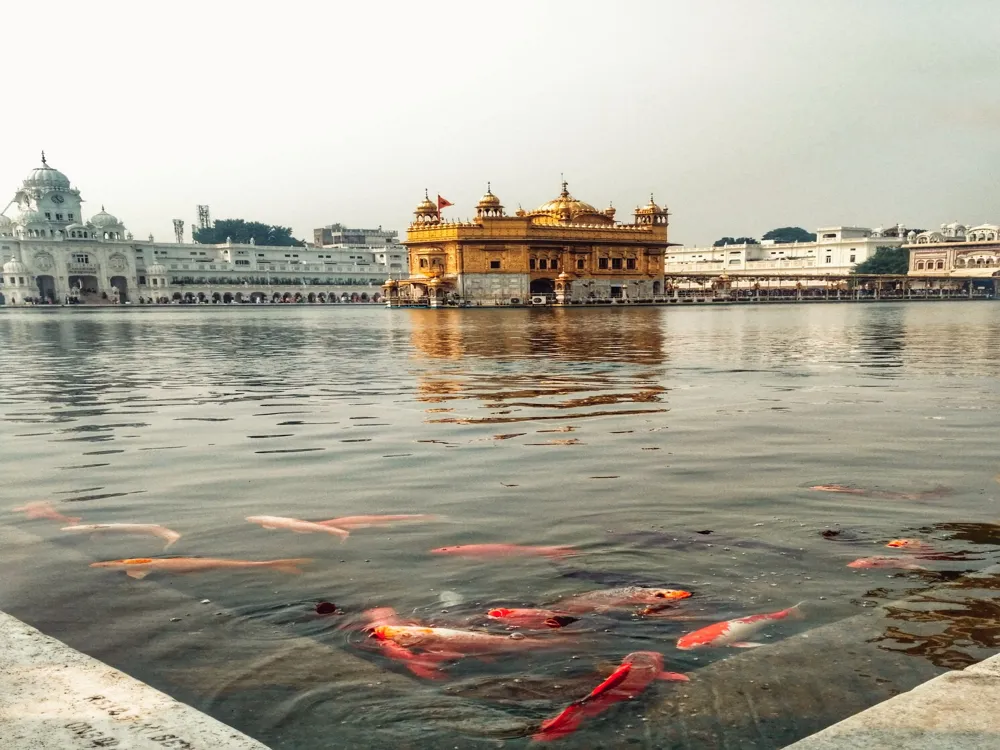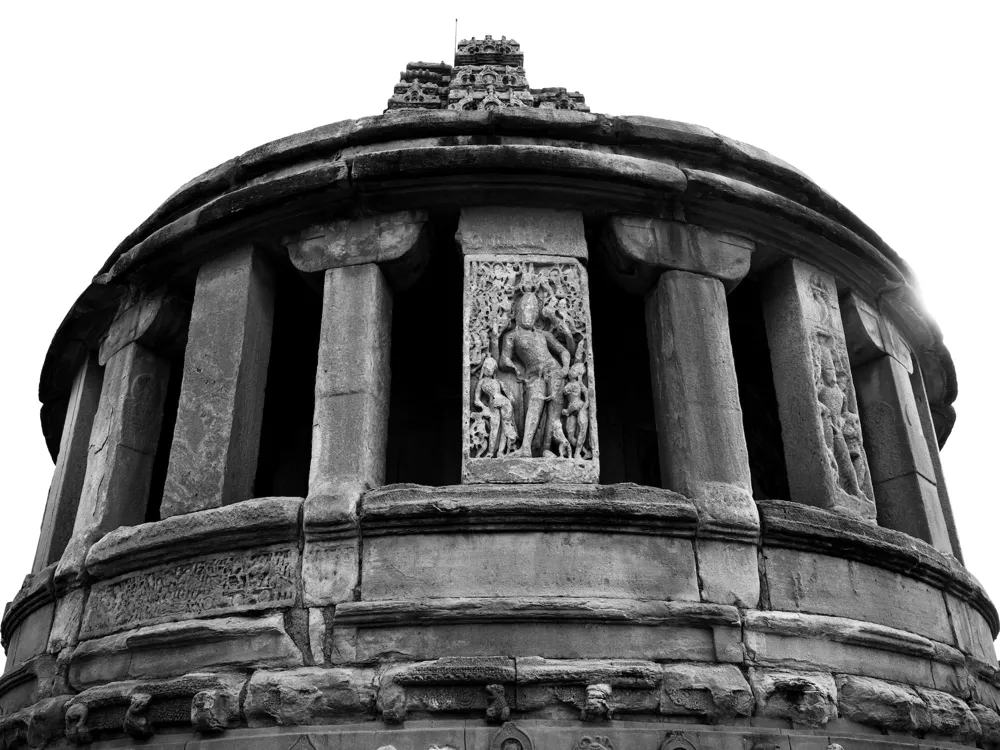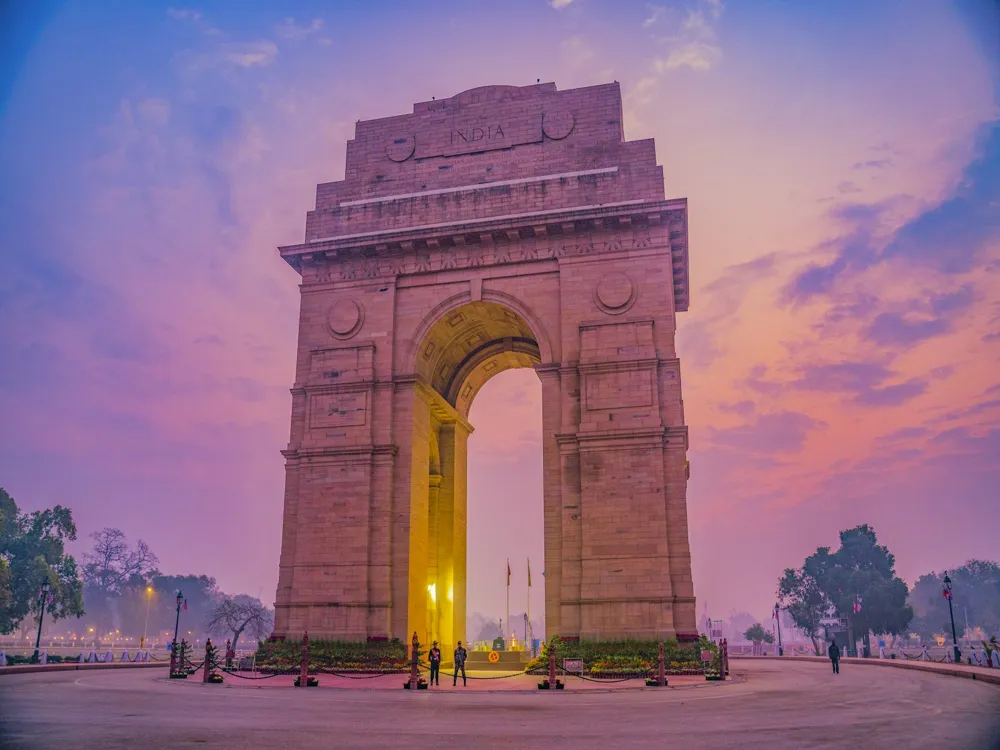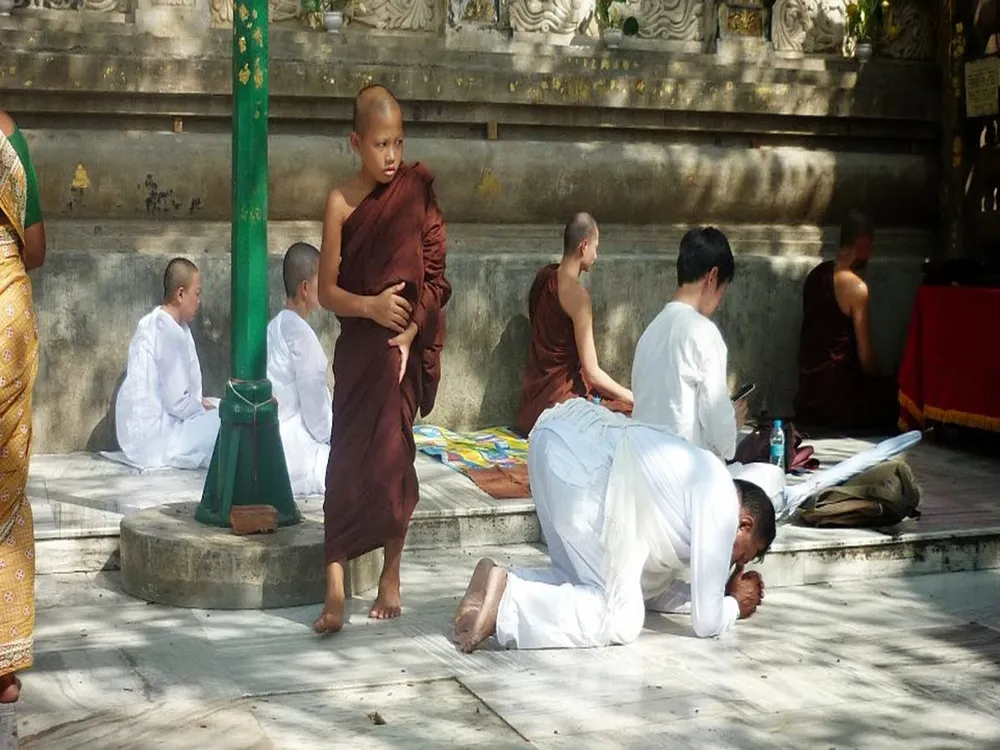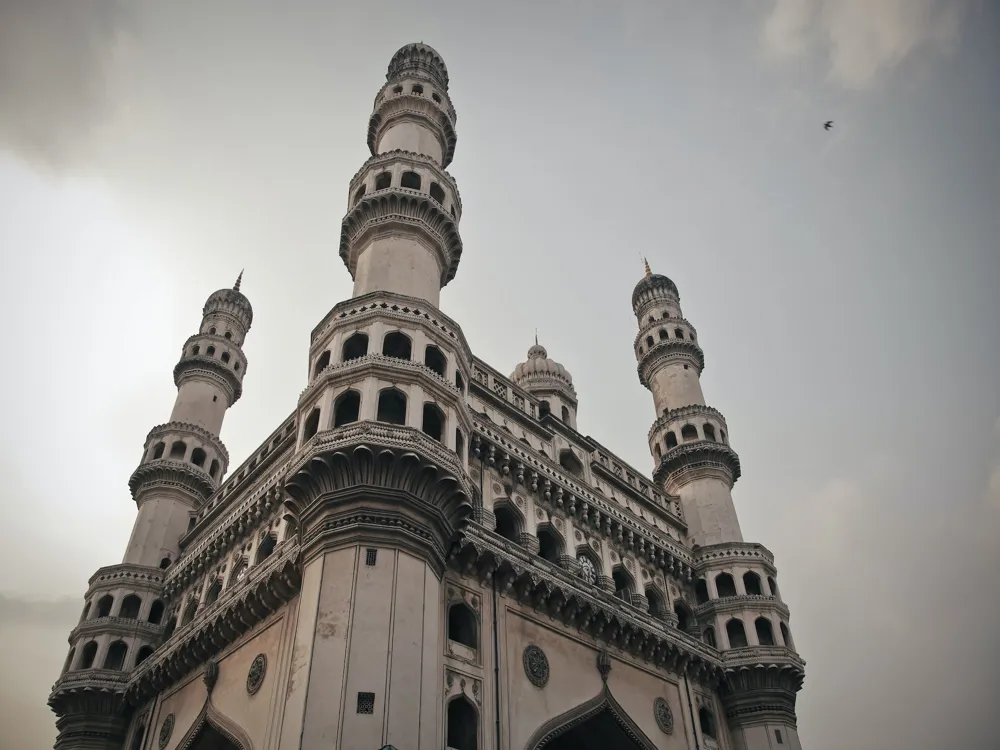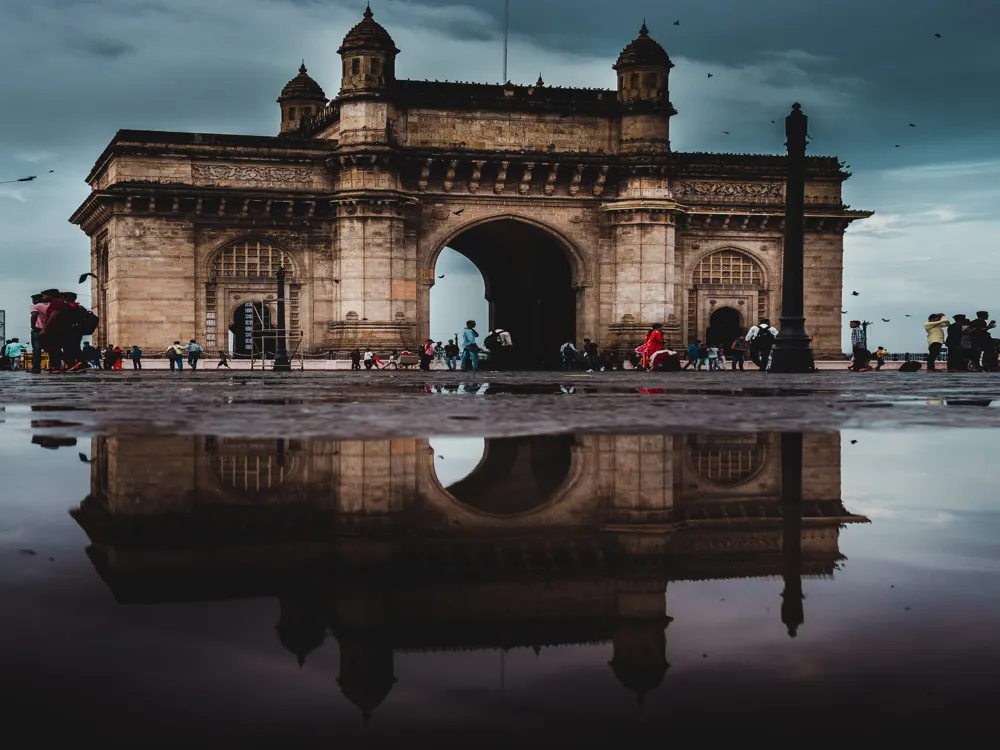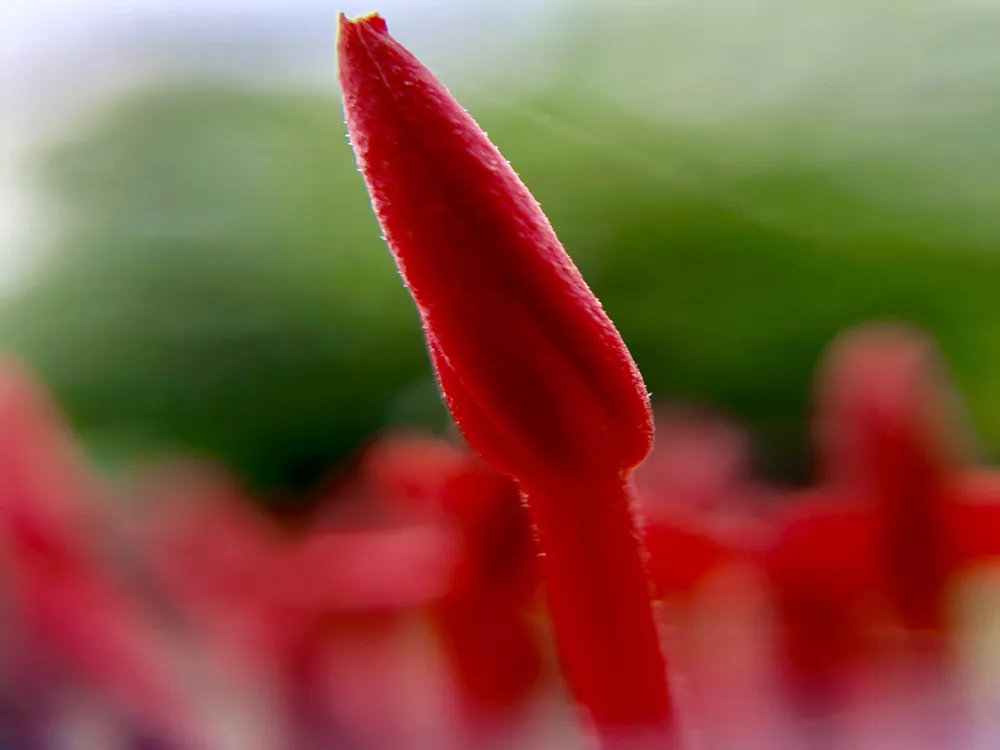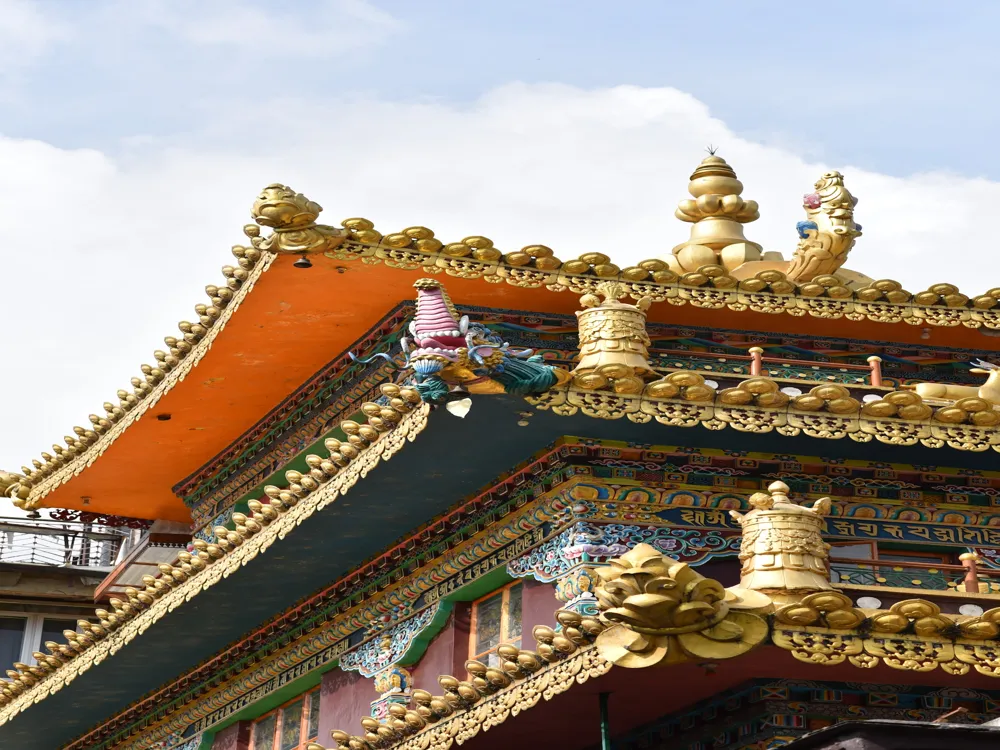Plan Your Travel To Badami
Places To Visit In Badami
Agastya Lake
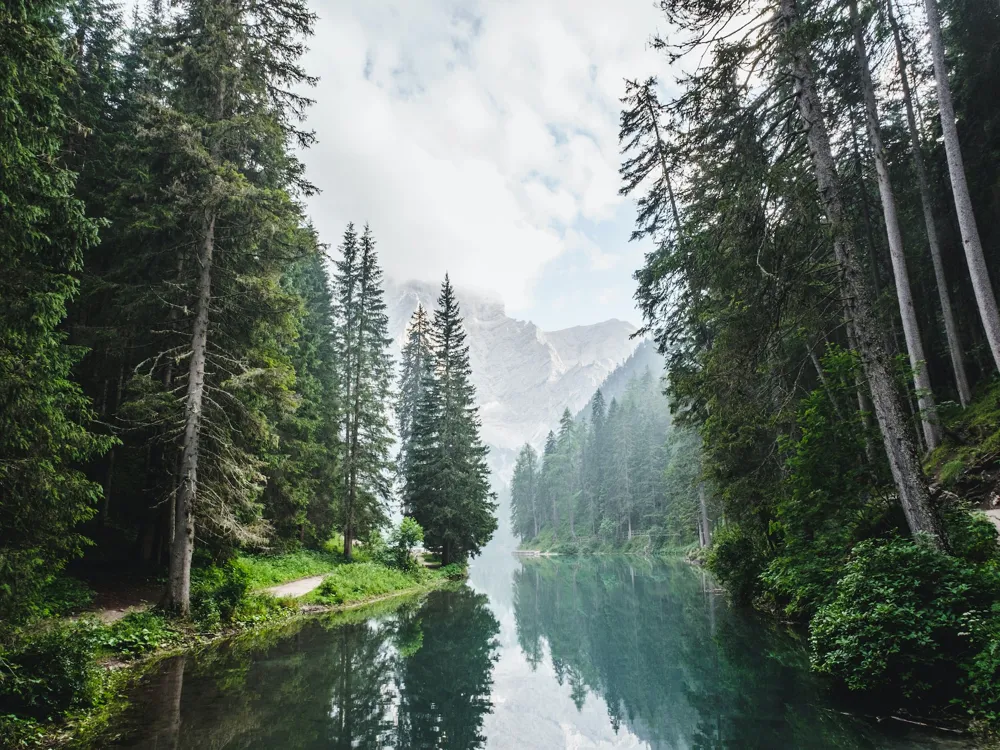
Agastya Lake is located at just a km from the Badami Bus Station. Said to possess healing powers, this lake faces all the caves temples of Badami and is surrounded by the red sandstone Bhoothnath Temple which lies on the eastern bank. There are no boating activities as such at the lake. The local people wash their clothes and take a bath in the water of Agastya Lake. The view of the hills from the banks looks beautiful.
Badami Fort
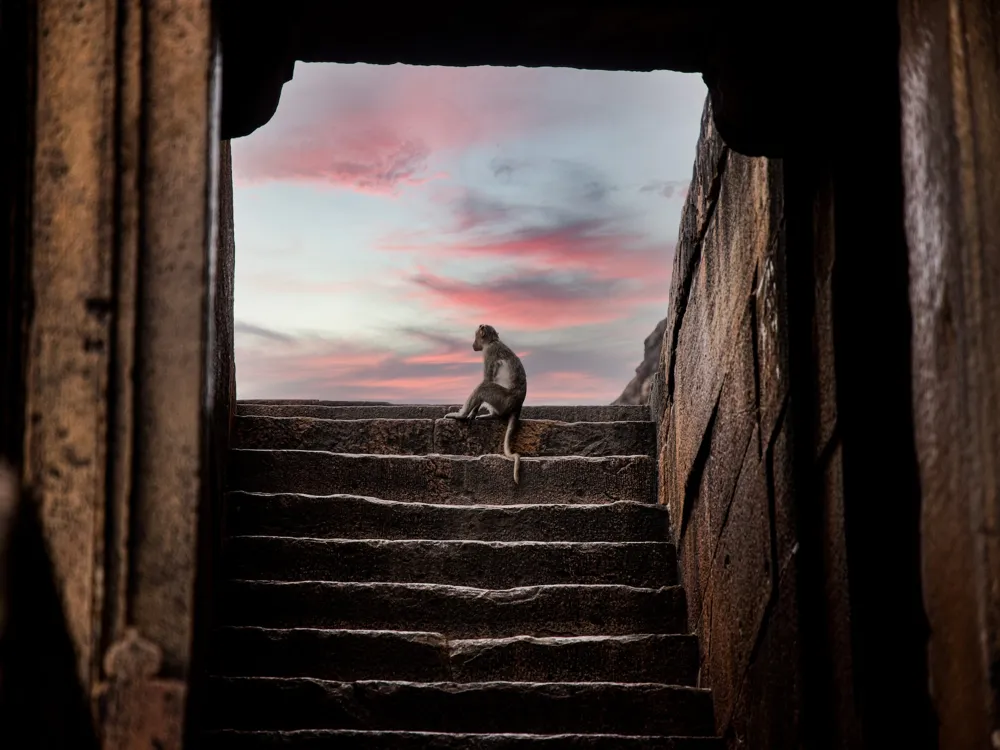
Badami Fort is was built by Chalukyan King Pulakeshi in 543 AD. Perched on the top of a cliff, this fort is accompanied by two Shivalaya complexes dating back to the 5th century. A 16th century and a 14th-century watchtower are also featured atop this hill. The Fort is located 500 m away from the Badami Bus Stand.
The Badami Fort was the Chalukyan capital 540 AD to 757 AD before the place was destroyed by the Pallavas in 642 AD. The Fort was rebuilt by Tipu Sultan during his reign. The Fort is surrounded by double-fortification walls and has chambers for granaries and other fortifications. There is a statue of Nandi, Lord Shiva's bull, at the entrance. The premises even has a large canon. One can view can get a magnificent view of the whole city from the Fort.
Read More
Banashankari Temple
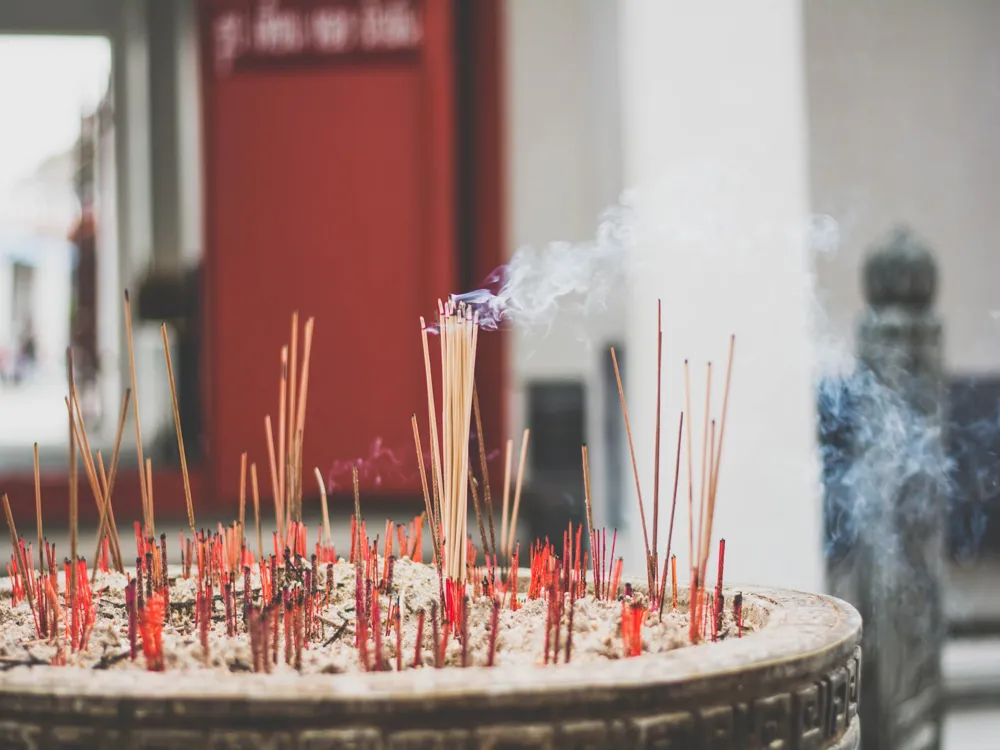
Banashankari temple, also known as Banashankari Amma temple, is located at Cholachagudd near Badami, Karnataka. It is one amongst the most famous Hindi shrines in the state. Several stories and beliefs revolve around the temple regarding its construction, history, and culture. However, the most exciting fact about this temple is that the people worship 'Rahukala' which is considered inauspicious as per Hindu culture. The devotees pray to Rahukala to let go of all the miseries, poverty and inauspiciousness from their life.
The Banashankari temple has a past of harmony, being constructed and renovated in the Dravidian and Nagara architectural styles. It has maintained its tradition of unity in the religious cum cultural festival of Banashankari Jatre every January, where people from Karnataka and adjacent states pour in to show their devotion and also witness in the cultural programmes and the fair. The Haridra Tirtha is a pond in the temple complex with a tall lamp over a three-story structure and this is an architectural marvel.
Read More
Bhuthanatha Temples
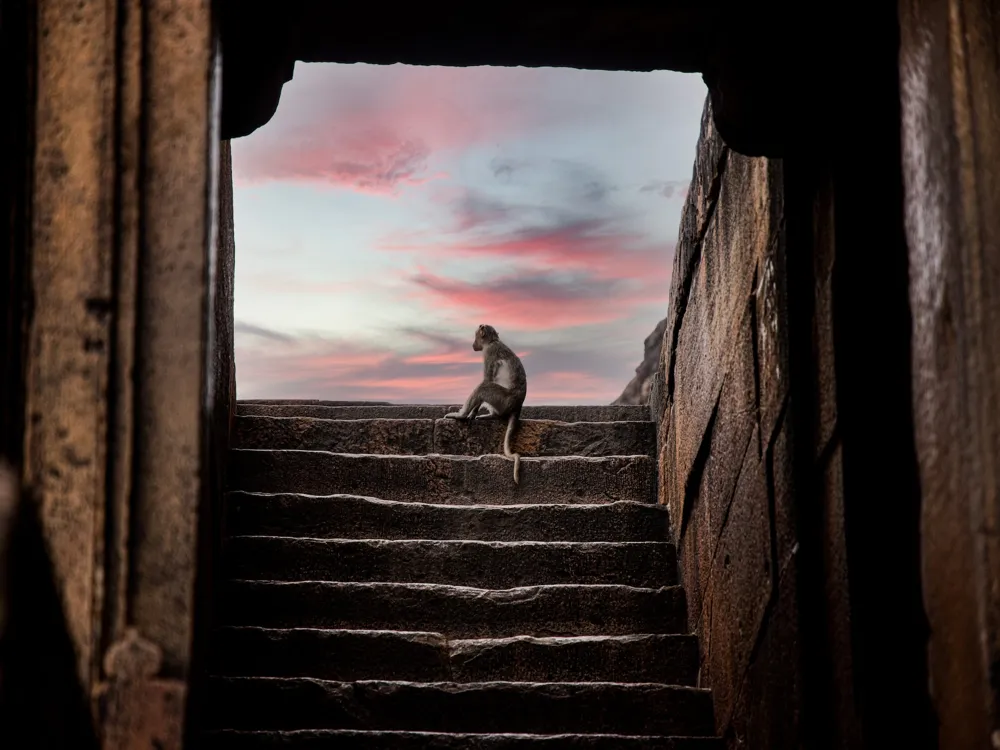
The two temples facing the Agastya lake, are known as the Bhuthanatha group of temples. To the east of the lake is the Bhuthanatha Temple and the temple to the North-East is the Mallikarjuna Temple. Built of local sandstone, they are dedicated to Lord Shiva, in the form of Bhuthanatha. The architecture resembles a typical South Indian temple. The sandstone used to build these temples gives them a beautiful glittering tint in the afternoon sun.
Cave Temples
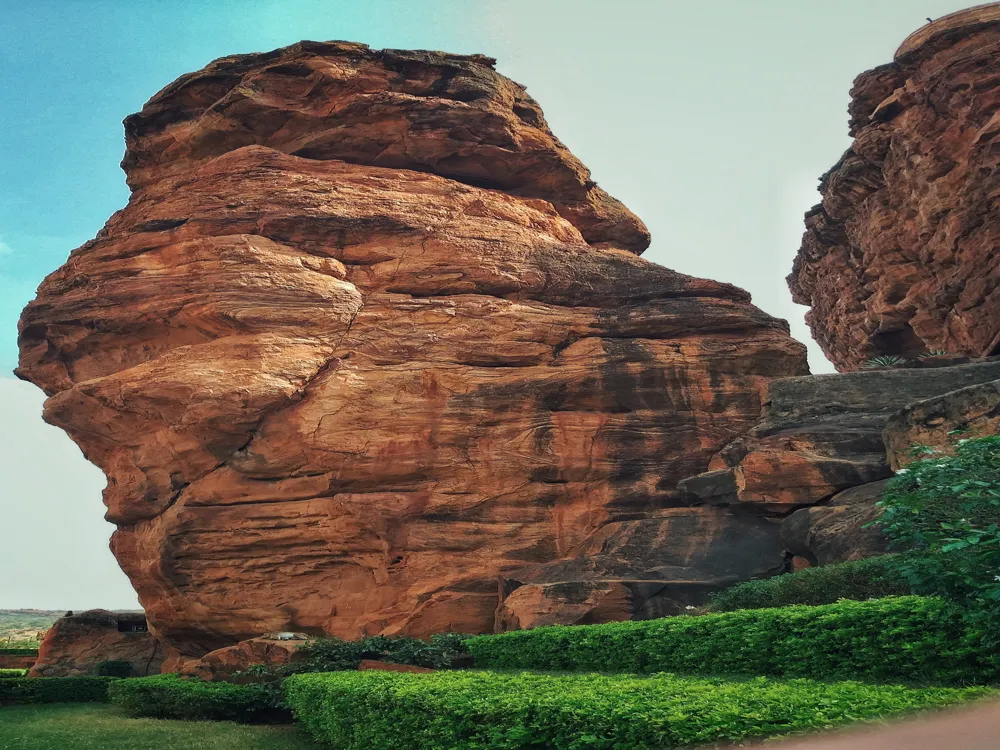
The Cave Temples of Badami consist of four separate temples, each holding intricate carvings and depictions. These carvings depict Shiva and Vishnu in various avatars in the first 3 temples, representing the Brahmanical style. The fourth temple is dedicated to Jain Tirthankaras. These beautiful red sandstone temples are candidates for the UNESCO World Heritage Sites list.
City Shopping
Take home some hand made artifacts and rugs from Badami. Shop for sandalwood and rosewood sculptures as well as traditional jewellery.
Lower Shivalaya
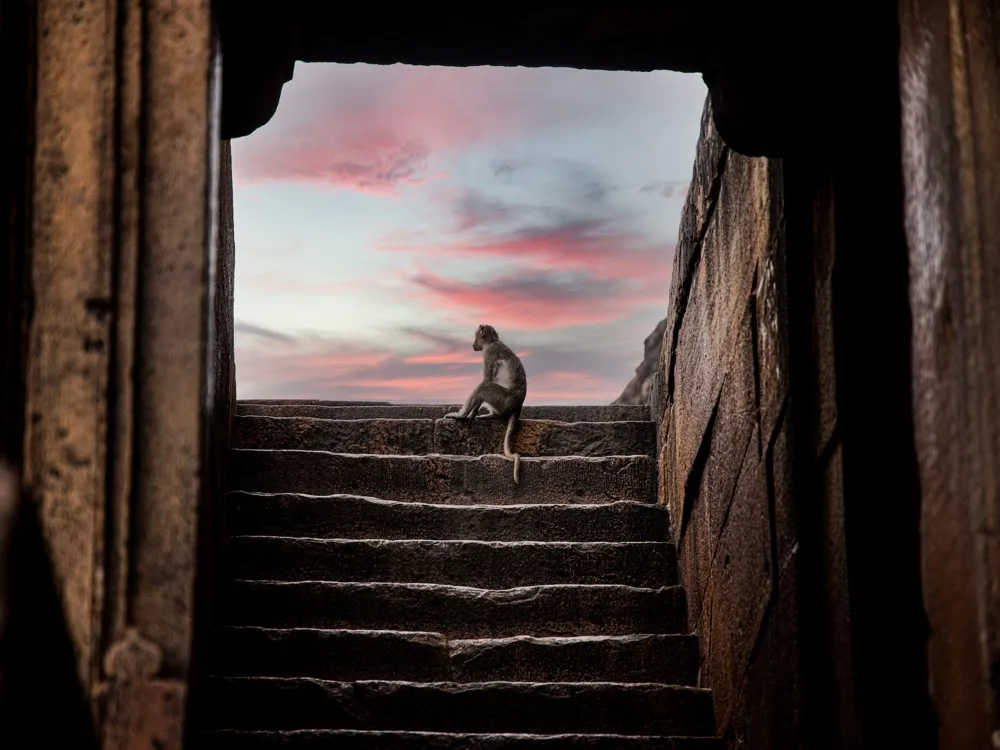
Built in the 7th century by the ancient Chalukyan dynasty, the Lower Shivalaya temple is part of a series of temples situated across the northern hill of Badami. This intricately carved rock-cut structure perhaps the earliest and best-surviving example of the magnificence of the Dravida style in the early Chalukya architecture. While the ravages of time and war have taken away some its original construction, the remnants have been beautifully preserved, with the current building continuing to attract tourists from far and near to marvel at its magnificence.
Dedicated to Lord Ganesha, the Lower Shivalaya, in its original glory, comprised of a small porch, a hall, and a double-walled sanctuary. However, only the inner sanctuary part of the original structure has been able to survive through all these centuries. The doorframe of the sanctuary is finely carved with bands of creepers and short staff-wielding door guardians. Inside the sanctuary lies a uniquely shaped elliptical lotus-petaled pedestal which has been speculated to hold a Brahmanical image in a different era. The first storey is succeeded by an octagonal neck and an octagonal dome, topped off wonderfully by a crowning stupa. The four miniature shrines at the four corners of the superstructure reflect the stucco work brought by the Vijayanagara rule.
Read More
Mahakuta Temples
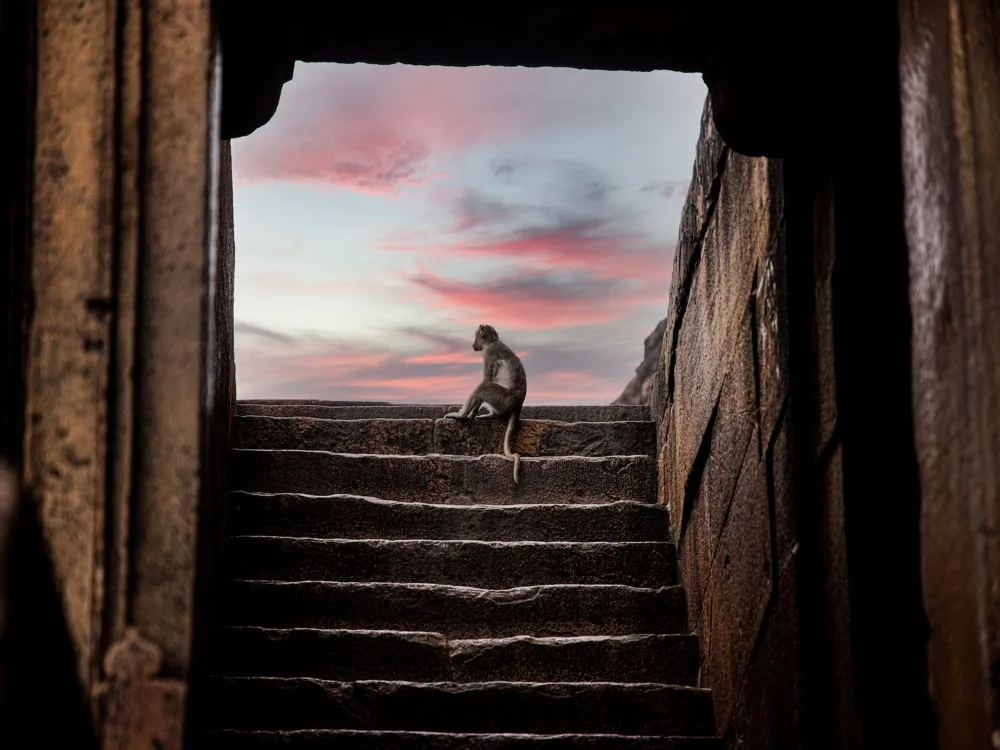
Situated on the outskirts of Badami in the tiny village of Mahakuta, the Mahakuta group of temples are an architectural delight, mirroring the unique rock-cut construction pattern of the Chalukyas seen across Badami. The collection of shrines here were built in the 7th century, devoted to Lord Shiva, of which the Mahakuteshwara temple is the largest. These temples combine the ancient architectural elements of the Dravidian and Nagara styles, as is seen at the various temples of this region.
The Dravida style temples here have a tiered tower over the shrine, capped with a dome-like structure. The adjacent Nagara style temples employ the use of a curvilinear tower over a shrine, built on a square plan and capped by an elaborately ribbed stone. Within the complex is a large tank that is fed by a natural mountain spring, called the Vishnu Pushkarni, or the Papavinasha Tirtha. It is believed that a dip in these waters washes away all the sins of a person, and many locals and tourists can be seen enjoying a leisurely bath here. The centre of the tank houses a small shrine with a Shivalinga. This is called Panchamukha linga, with one face carved in each direction and one on top.Apart from its religious significance, intricate design and fascinating architecture, this temple cluster is also important to historians due to two 7th century inscriptions found here. The Mahakuta Pillar inscription records the achievements and the military expeditions of the Chalukyas. The inscription seen on the porch is said to be from Vinapoti, a concubine of King Vikramaditya, detailing the offering of silver and rubies made to Lord Shiva. The walls of the temples are adorned with carvings of various religious figures.
Read More
Malegitti Shivalaya Fort and Temple
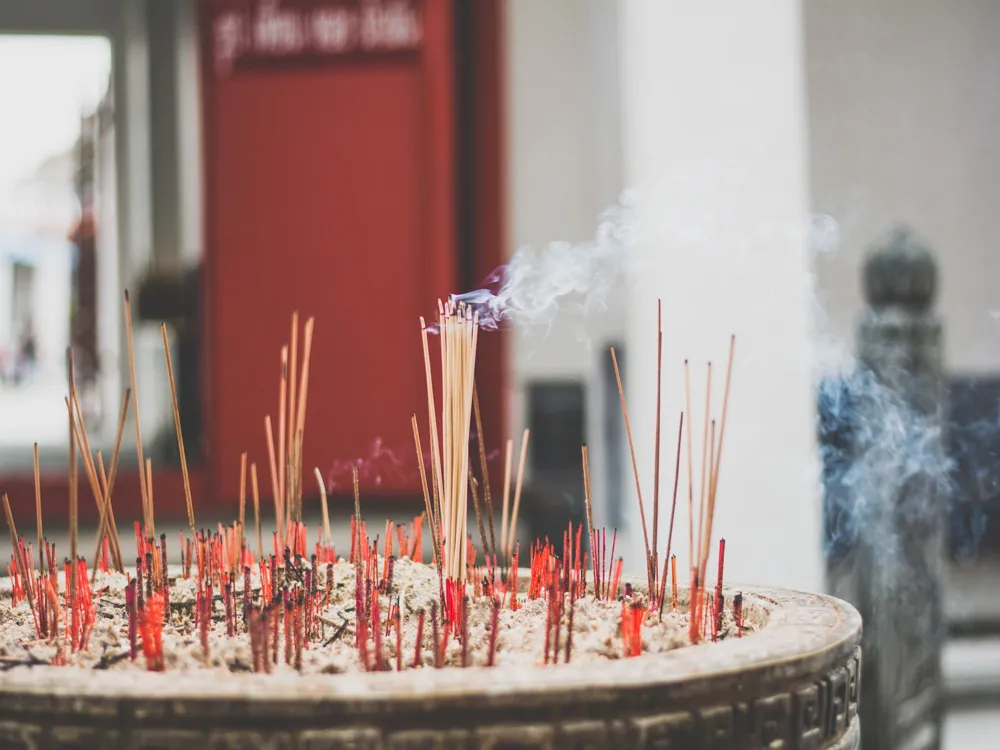
A grand example of ancient Chalukya architecture, the Malegitti Shivalaya Fort and Temple is an elegantly carved, rock-cut temple atop a rugged rocky outcrop in Badami. The temple was built in the 7th century and is perhaps the earliest and best surviving example of the magnificence of the Dravida style in the early Chalukya architecture. The Fort is located next to the Badami Archeological Museum. There's a breathtaking view of the lake and the caves from here.
The Malegitti Shivalaya was originally dedicated to the Sun God Surya. A small image of the Sun God with seven horses may be seen on the top lintel of the door to the inner sanctum. The temple is now devoted to Lord Shiva, with a large Shivlinga placed on a pedestal inside the sanctum. The temple consists of a sanctuary, without passageway, opening into a triple-aisled mandapa-styled hall. The walls have a curved course and a central recessed portion which has been divided into panels with carvings of gana musicians, dancers and warriors. The walls of the mandapa have three projections with panels portraying Shiva and Vishnu. Each god is accompanied by a pair of companions. The base of the structure has beautiful continuous friezes of ganas. There is a tower rising over the sanctuary, above which rises the octagonal dome roof. Two impressive columns define a small bay in front of the sanctuary doorway, which is framed by jambs with legendary animals carved into its surface.
Read More
Mallikarjuna Temple
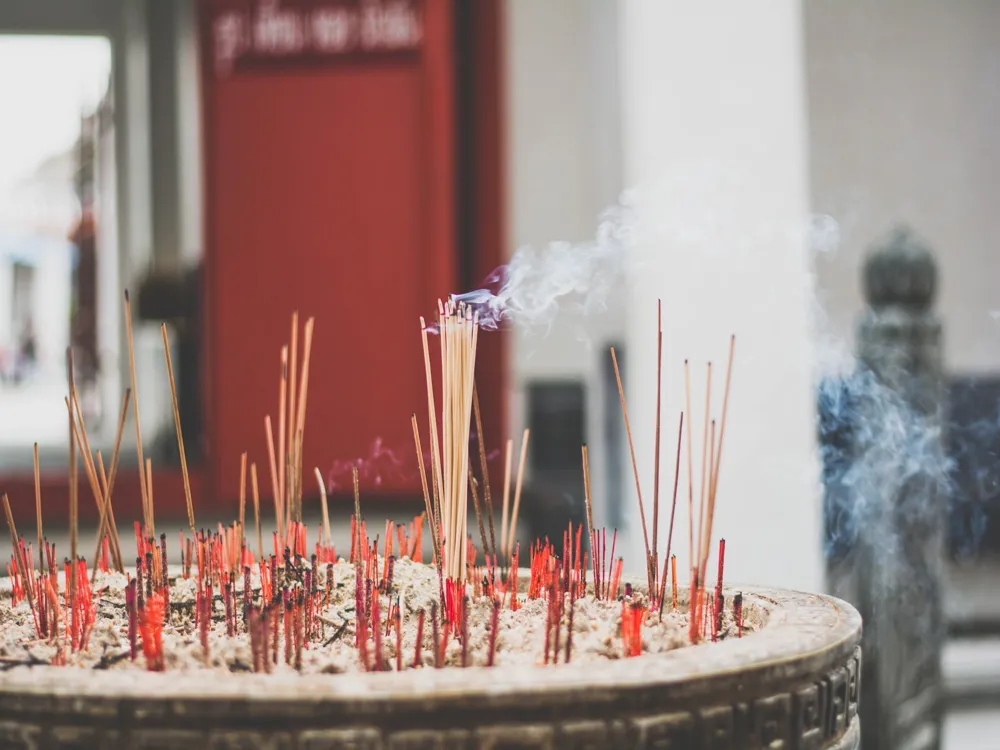
Within the Bhootanatha temple cluster by the beautiful Agastya Lake of Badami lies the elegantly designed Mallikarjuna Temple. Dedicated to Lord Shiva, the temple, along with smaller shrines built around it, was constructed in a star-shaped plan in the 11th century. Its structure is the representative of the Chalukyan architectural influence seen on a majority of the historical buildings in this heritage town.
Built in the Phamsana style, with tiered pyramids forming the greater part of the structures, these temples are assumed to have been constructed during the era of the Rashtrakutas and Kalyani Chalukyas. The outer walls of the temple are uncarved, smooth rock surfaces. The tower of the inner sanctum is built in the typical Rashtrakuta style of architecture. The main shrine has a pillared chief mandapa or hall, an enclosed middle mandapa followed by the inner sanctum. The inner walls and pillars are smooth and plain, with angled eaves across the roof of the halls. The shrines are topped up by pyramid-shaped superstructures made of closely spaced horizontal tiers. Outside the temple clusters lies the charming blue-green Agastya Lake, with a glorious sight of the massive rocky hills of Badami at its flanks.
Read More
Badami Travel Packages
View All Travel Packages Badami
Nearby Places Badami
Browse Package Collections
Browse Hotel Collections










